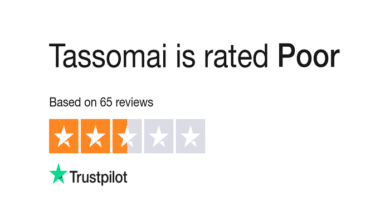Path of Exile (PoE) Trade Currency: A Comprehensive Guide

Introduction
Path of Exile (PoE) is a complex action RPG that features a unique trading system centered around various forms of currency. Unlike traditional games, PoE trade currency isn’t just a means to purchase items but also serves as crafting materials and enhancement tools. Understanding PoE trade currency is crucial for anyone looking to master the game’s economy and improve their gear.
What is PoE Trade Currency?
PoE trade currency refers to the various orbs and scrolls used in Path of Exile for trading and crafting. These items are not only used as a medium of exchange but also play a significant role in item enhancement and crafting. The most common types of PoE trade currency include Chaos Orbs, Exalted Orbs, and Orb of Alchemy.
The Role of Chaos Orbs in PoE Trade Currency
Chaos Orbs are one of the most frequently used forms of PoE trade currency. They are often considered the standard unit of trade, similar to gold in other RPGs. Chaos Orbs are used to re-roll the random modifiers on a piece of rare equipment, making them highly valuable for players looking to optimize their gear.
Exalted Orbs: The High-End PoE Trade Currency
Exalted Orbs are one of the most coveted forms of PoE trade currency due to their rarity and significant impact on item crafting. They add a new random affix to a rare item, making them essential for high-end crafting and trading. Understanding when and how to use Exalted Orbs can dramatically increase a player’s wealth in Path of Exile.
Orb of Alchemy: A Versatile PoE Trade Currency
The Orb of Alchemy is another vital piece of PoE trade currency. It upgrades a normal item to a rare item, which can then be further modified using other currencies. These orbs are especially useful for players looking to create rare items for trade or personal use, making them a staple in the PoE trade currency ecosystem.
The PoE Trade Market
The PoE trade market is a dynamic and player-driven economy where the value of PoE trade currency can fluctuate based on supply and demand. Sites like PoE Trade and the official Path of Exile trade platform provide players with tools to buy, sell, and price-check items. Mastering the trade market requires a keen understanding of current currency values and market trends.
Strategies for Accumulating PoE Trade Currency
Accumulating PoE trade currency efficiently involves a mix of farming, crafting, and trading. Engaging in high-yield farming activities, such as running maps with increased item quantity or participating in league-specific events, can significantly boost your currency gains. Additionally, understanding crafting mechanics and market demands allows players to create and sell high-value items.
Crafting with PoE Trade Currency
Crafting in Path of Exile is an art form that heavily relies on PoE trade currency. Players use various orbs to modify items, with the goal of creating powerful gear. Knowing which currencies to use and when can make or break a crafting session. For example, using Chaos Orbs to re-roll modifiers or Exalted Orbs to add new ones can transform a mediocre item into a valuable asset.
Trading Tips and Tricks in Path of Exile
Effective trading in Path of Exile involves more than just knowing the value of PoE trade currency. Players should also be aware of the best times to trade, how to negotiate prices, and how to spot good deals. Utilizing trading platforms, setting up shop in popular trade hubs, and maintaining a good reputation can help players maximize their profits.
PoE Trade Currency in Different Leagues
Each league in Path of Exile brings its own set of challenges and opportunities for acquiring PoE trade currency. Understanding the mechanics of the current league and how they impact currency acquisition can give players an edge. For example, league-specific events may offer unique currency items or increased drop rates for certain orbs.
Future Trends in PoE Trade Currency
As Path of Exile continues to evolve, so does its economy. Keeping an eye on developer updates, community discussions, and upcoming content can provide insights into future trends in PoE trade currency. Staying informed allows players to anticipate changes in the market and adjust their strategies accordingly.
Conclusion
Mastering PoE trade currency is essential for anyone looking to excel in Path of Exile. From understanding the basics of Chaos Orbs and Exalted Orbs to navigating the complexities of the trade market, this guide provides a comprehensive overview of how to maximize your wealth and gear. By applying the strategies and tips outlined here, players can dominate the economy and enhance their Path of Exile experience.
FAQs
1. What is the most valuable PoE trade currency?
The most valuable PoE trade currency is generally considered to be Exalted Orbs due to their rarity and significant impact on item crafting.
2. How can I check the value of PoE trade currency?
You can check the value of PoE trade currency using websites like PoE Trade or the official Path of Exile trade platform, which provide up-to-date price information based on current market trends.
3. What is the best way to farm PoE trade currency?
The best way to farm PoE trade currency is by engaging in high-yield activities such as running maps with increased item quantity, participating in league events, and efficiently managing your inventory and stash.
4. Can I trade PoE currency between different leagues?
No, PoE currency cannot be traded between different leagues. Each league has its own separate economy, and currency items cannot be transferred from one league to another.
5. What are some common mistakes to avoid when trading PoE currency?
Common mistakes to avoid when trading PoE currency include overpaying for items, failing to price-check items before trading, and not understanding the current market trends. It’s also important to avoid scams by trading through reputable platforms and dealing with trusted players.





